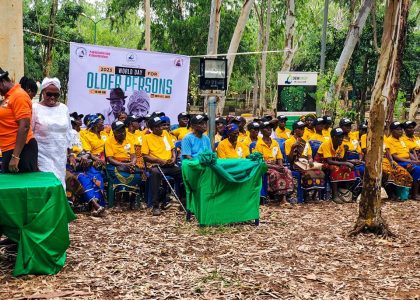Sign Language is a system of communication with the use of visible gestures and signs. These visual-manual modalities are expressed through manual articulation in combination with non-manual elements to convey meaning. Sign or signed languages are full-fledged natural languages with its own grammar and lexicon; use of hand gestures and symbols for words or letter of the alphabet. This is used for and by people who are deaf or hard-of-hearing.
This language has been known to be in existence throughout history as one of its earliest written records is from the fifth century BC in Plato’s cratylus, where Socrates said: “if we hadn’t a voice or a tongue, and wanted to express things to one another, wouldn’t we try to make signs by moving our hands, head and the rest of our body, just as dumb people do at present?”. Until the 19th century, most of known historic sign languages were limited to manual alphabets [finger spelling systems] invented to facilitate transfer of words from a spoken language to sign language rather than the documentation of the language itself. Pedro Ponce de León (1520-1584) is said to have developed the first manual alphabets. Frenchman Charles-Michel de l’Épée published his manual alphabet in the 18th century. This has survived largely unchanged in France and North America until the present time. In 1755, Abbé de l’Épée founded the first school for deaf children in Paris; Laurent Clerc was arguably its most famous graduate. Clerc went to the United States with Thomas Hopkins Gallaudet to found the American School for the Deaf in Hartford, Connecticut in 1817. Gallaudet’s son, Edward Miner Gallaudet, went on to found a school for the deaf in 1857 in Washington. D.C. In 1864, it became the National Deaf-Mute College, now called Gallaudet University. It is still the only liberal arts university for deaf people in the world.
Asides sign language being a means for full access to communication for deaf and hard-of-hearing people, those who can hear but cannot speak also get to utilize its values [augmentative and alternative communication.
There are different sign languages but most widely used is probably the American Sign Language (ASL) which is used in the USA, Canada, some parts of Mexico with modifications in Central America, Asia, Africa and a few other countries. The disadvantages of the American Sign Language are its dual language perspective as the ASL and English are two very different languages; inadequate language models amongst many. It has been noted that learning the ASL is not easier than learning spoken French or any other spoken languages as it takes at least six 3-credit ASL courses over the span of 2-3 years to obtain a beginning-intermediate skill.
Sign language builds communication in words and feelings. It improves expressive communication, general interpretation of body language as studies have shown that those who sign have improved ability to read body languages. The language bridges the gap of frustration for the hearing impaired who is pressured trying to hear or understand words that are not coming clearly. Sign language can also be adopted as a secret communication style for groups of individuals other than hearing impaired, to communicate exclusively.
The United Nation (UN) General Assembly has proclaimed 23rd September as International Day of Sign Languages for awareness creation on the importance in full realization of human rights of people who are hearing impaired.
Reference:
Google: Definitions from Oxford language. Sign language-Wikipedia
Sign language dictionary definition/sign language defined https://www.yourdictionary.com>signl
Reasons Sign Language is Awesome-Ai-Media Blog https://blog-ai-media.tv>blog>
What is the Importance of Sign Language?-Quora. https://www.quora.com>
What is the most commonly spoken sign language?-Quora. https://www.quora.com>
Disadvantages of ASL- eHow UK May 13, 2017. https://www.ehow.co.uk>info-858
How long does it take to learn ASL https://www.handspeak.com>learn
5Ways Sign Language Helps Communication July, 17 2018 https://familyaudiologyonline.com
International Day of Sign Languages 23 September the United Nations




